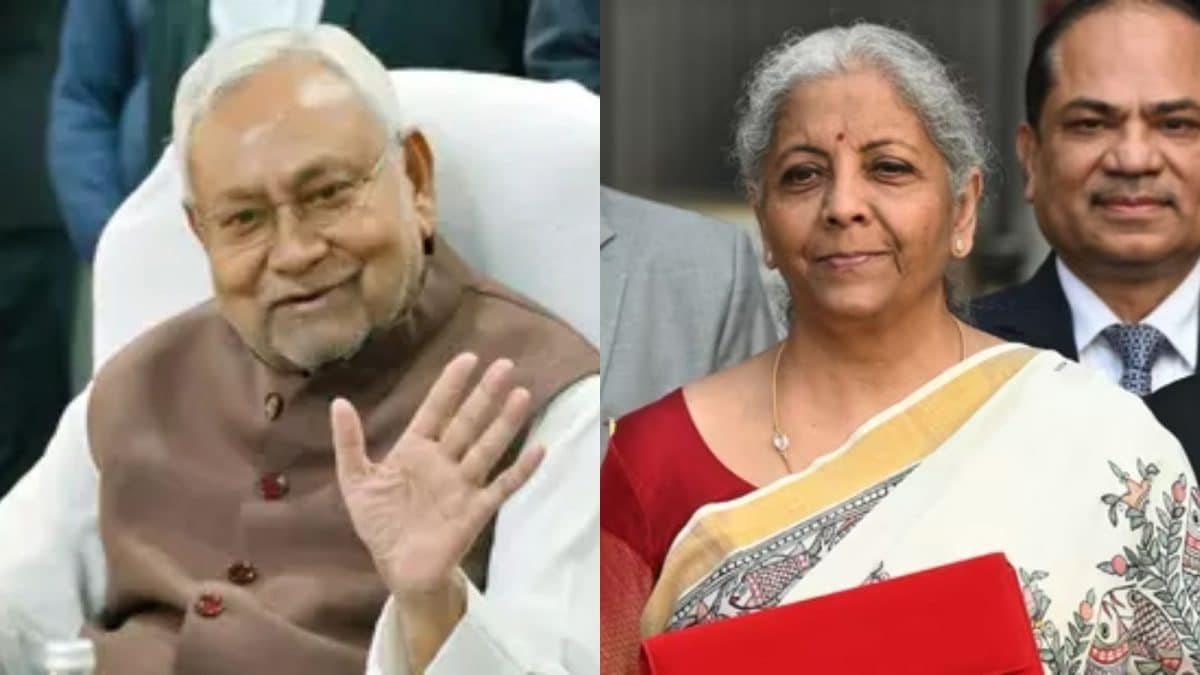Okaz, Saudi Arabia, January 24
Saudi Crown Prince Mohammed bin Salman’s (MBS) announcement that the kingdom intends to boost its investments and trade relations in the US to an impressive $600 billion, over the next four years, marks the culmination of nearly a century of close relations between these two global powerhouses. This enduring partnership is rooted in political alliances, mutual investments, and extensive economic interests.
The strategic relationship between Riyadh and Washington, DC, traces its origins back to the discovery of oil in Saudi Arabia in 1933, a milestone not only in the history of the two nations but also in the global economy. Oil, thanks to this Saudi-American partnership, became the linchpin of modern life. A defining moment in this relationship was the historic meeting between King Abdulaziz Al-Saud and US President Franklin Roosevelt in 1945 aboard the destroyer USS Quincy. This iconic meeting, one of the most significant post-World War II, laid the groundwork for a deep and enduring relationship that thrives to this day.
The next significant development occurred in 1974, when Prince Fahd bin Abdulaziz, who later became king, established the US-Saudi Arabian Joint Commission. This landmark framework agreement, aimed at bolstering economic and commercial activity between the two nations, materialized during his visit to the US. Prince Fahd’s meeting with then-secretary of state Henry Kissinger culminated in an economic agreement focusing on cooperation in manufacturing, education, technology, and agricultural development.
Further strengthening this alliance, the inaugural meeting of the US-Saudi Arabian Joint Commission occurred during former president Richard Nixon’s 1974 visit to the Kingdom of Saudi Arabia, reaffirming the profound economic and investment ties between the two countries.
Fast forward to the present, the third phase is spearheaded by MBS. He has unveiled ambitious investment plans following a conversation with US President Donald Trump, after his inauguration. The crown prince articulated the kingdom’s intention to expand its investments and trade ties in the US to the remarkable sum of $600 billion over the coming years. These planned investments continue the economic and trade partnerships initiated during President Trump’s first term in 2017, offering opportunities in promising sectors that directly impact the transfer and localization of technology and job creation, capitalizing on Saudi Arabia’s rapid economic growth as one of the fastest-growing economies among the G20 countries.
The MBS’s announcement aligns with SoftBank’s declaration – an entity in which the kingdom holds shares – to allocate $500 billion in artificial intelligence (AI) investments. Over the next four years, Saudi investments in the US seek to yield significant benefits through joint cooperation, particularly in key areas such as military industries, space exploration, AI development, and nuclear energy advancement.
The US is far from an ordinary partner. It stands as one of the kingdom’s paramount economic allies and a favored destination for Saudi investment. This is evident in the increase of Saudi holdings in US Treasury bonds to $140.3 billion in June 2024. The US ranks second in Saudi exports and first in imports, while Saudi Arabia remains the US’s largest trading partner in the Middle East, with a trade balance surplus in Riyadh’s favor over the past decade.
More than 500 American companies invest in the kingdom, and joint US-Saudi projects number 609, boasting an investment value of approximately $62 billion.
Today, the concerted efforts of MBS to strengthen Saudi-American relations and realign them economically, politically, and security-wise result in a series of agreements and investments promising economic integration, industry localization, and maximized returns for both nations.
Marked by considerable harmony, Saudi-American relations have persisted for over 90 years, beginning with American investment in a Saudi oil well and culminating in ambitious Saudi investments worth $600 billion. Throughout this period, both countries and their well-established institutions have been diligent in maintaining a robust connection that has not only benefited them but also contributed to ensuring secure energy supplies, stabilizing the global economy, and fostering security and development in the Middle East and beyond. – Mohammed Al-Saeed
ISRAELI HYPOCRISY SURROUNDING THE DEAL
Al-Ahram, Egypt, January 24
Israeli voices strongly criticized the manner in which Hamas handed over the Israeli prisoners to Red Cross employees amid the throngs of Palestinian crowds in Al-Saraya Square, located in the heart of Gaza. The Israelis viewed this as a calculated move by Hamas to showcase its might, evidenced by a significant number of its fighters brandishing automatic weapons in their official uniforms, all while enveloped by thousands of Palestinians chanting for continued resistance against Israel.
These dissenting Israelis called for a change in the procedure for handing over the remaining Israeli prisoners in subsequent batches, aiming to prevent Hamas from bolstering its image of strength and popular support.
Meanwhile, regarding the three Israeli female prisoners released in the first batch, Israel restricted them from engaging with the media, including Israeli outlets, to avoid a repeat of the November 2023 incident. At that time, the released female prisoners spoke to the media about the humane treatment they received from their Palestinian captors, which sparked criticism because their accounts clashed with the narrative Israel promotes of Palestinians as criminals and savages.
On the other hand, for the Palestinian prisoners released this week in exchange for the three Israeli female prisoners, Israeli authorities instructed their families to refrain from public celebrations, abstaining from taking celebratory pictures, inviting neighbors or relatives to welcome them, or engaging in traditional expressions of joy such as ululations and distributing sweets.
Reports from Palestinian prisoners detail that Israeli prison authorities consistently denied them basic rights mandated by international agreements, including the opportunity for exercise, limiting showers to three minutes, and providing only minimal food to maintain basic human activity. They were reportedly packed into cramped cells and denied medical treatment and visitation rights. They claimed these harsh measures were enforced with explicit instructions from Itamar Ben Gvir, then-minister of national security, who held the authority to impose prison regulations.
This is the same minister who recently resigned from Netanyahu’s government in protest against the release of Palestinian prisoners and the Israeli army’s cessation of lethal actions against Palestinians in Gaza. – Ahmed Abdel-Tawwab
THE DEAD DID NOT WIN IN GAZA
Al-Arab, London, January 25
“We escaped being killed.” This is the unspoken sentiment echoed by the people of Gaza, consistently overlooked by the Arab media, afraid of accusations of siding with Israel and its leader, Benjamin Netanyahu. Yet, this sentiment repeatedly surfaces, even in the mundane neglect.
Last Sunday, as the ceasefire was announced, Hamas militants emerged from their tunnels, celebrating in the streets and proclaiming victory. Curiously, no one in Gaza bothers to ask them, “Where were you? And who exactly did you defeat?” It’s not just because the answers are known, but also because the people recognize that their survival is irrelevant to these victors.
The people of Gaza, ironically, celebrated a victory, which, in truth, belongs to others over them. Both warring factions have triumphed at Gaza’s expense. Contrary to claims, Hamas did not destroy Israel, whose reality on the ground reveals complete fulfillment of its destructive intentions against its adversaries.
Similarly, Hamas remains “undefeated,” evidenced by pervasive Arab media focus on released female prisoners, overshadowing the grievous cost of 50,000 dead, 100,000 injured and disabled, 10,000 missing beneath the rubble, and cities destroyed with monumental reconstruction needs, of which a minimal portion benefits Gaza.
Within the culture of Arab defeat, we recognize two architects of loss who reacted differently. On one side is Gamal Abdel Nasser and on the other is Saddam Hussein. When Egypt faced defeat in 1967, Abdel Nasser addressed Egyptians and Arabs, acknowledging his responsibility. However, when Iraq suffered a setback in the 1991 Kuwait Liberation War, Saddam declared, “How wonderful is victory with the help of God.” Iraq then grandiosely named the conflict “the mother of all battles,” suppressing any reference to “the Second Gulf War” among Iraqis.
Nasser’s legacy lies in not equating survival with victory, while Saddam regarded enduring despite causing the deaths of over a quarter of a million Iraqi soldiers as victorious.
If Hassan Nasrallah were alive today, the Lebanese could not claim triumph over his looming specter notwithstanding Lebanon’s steep toll in material ruin and human loss. Pragmatically, the Iraqi people, past and present, endure the cost of a man’s defeat, who ironically triumphed over international will.
This irony has left Iraq in a fractured and marginalized state, scarce in both citizenship and confidence in its continuity. This parallel extends to the people of Gaza, severed from Palestine for nearly two decades, with Hamas’ gambit cementing their spiritual defeat. Their survival holds little worth, merely underscoring a false victory for Hamas, whose members wield only personal arms as their language with a society from which tens of thousands have departed to the afterlife.
Hamas is unlikely to recognize the devastated community within its midst, where awaiting a ceasefire equated to anticipating victory – an eventuality Netanyahu feared, acting immaturely, mirroring the reckless impulsiveness that characterizes the opposing side’s conduct.
Any candid discourse on Gaza’s victory seeks to mask Israel’s atrocity, which is indefensible. Israel has inflicted systemic genocide in Gaza, rendering any semblance of triumph among its people unacceptable. The deceased, the incapacitated, and the missing, entombed under their own homes, did not prevail; they perished, knowing full well that their assassin understood their innocence.
Israel’s misdeed cannot be glorified with illusory victories’ hymns. Meanwhile, the living Gazans have long wished for death’s release from the indignities, deprivation, anxiety, and displacement they endure.
The prisoner exchange deal between Hamas and Israel ought not to be perceived as a reward for initiating war, masquerading its end goal. It is unjust for Gaza to face a ruinous Israeli assault over a year, three months, and 14 days merely to release a few hundred Palestinian prisoners from Israeli jails.
Had these prisoners been offered the choice between extended imprisonment or Gaza’s annihilation and economic devastation, they would have chosen captivity. Today, there’s a pitiable bid to market the notion of victory by spotlighting the stories of released Palestinian female prisoners, aimed squarely at concluding the original narrative, which necessitates assigning accountability for the transpired actions and potentially arraigning those at fault, should Palestinian courts exist for such a purpose. – Farouk Youssef
THE GAZA AGREEMENT: OPPORTUNITIES FOR CONSENSUS
Al-Ittihad, UAE, January 25
Following the announcement of the phased implementation of the Gaza agreement, a pertinent question lingers: Has Hamas truly benefited from the agreement, or has Israel suffered a loss? The answer lies in the grim reality within the Gaza Strip, now in ruins, with Israel occupying a significant portion – up to 30%. Israel remains adamant about exercising its freedom to act and directly intervene if Hamas engages in any activities, establishing Gaza as a persistent security threat.
This stance is tied to Israel’s commitments during the initial implementation phase and much depends on how the situation in Gaza unfolds and Hamas’ potential resurgence. This scenario foretells a political vacuum, absent any authority represented by institutional governance on the ground, apart from Hamas’ fragmented institutions and security frameworks, which might have disintegrated but persist in a compelling media narrative, signifying that Hamas’ presence endures, albeit in a different form.
Hamas places its bets on its involvement in the evolving Palestinian political landscape, with certain factions endeavoring to reconstitute Palestinian presence through initiatives such as the Community Support Committee. This persisting vacuum is set to fuel instability in operations and movements, whether concerning aid delivery or border crossings, underscoring that the passage of trucks is just one piece of a larger puzzle.
Numerous issues loom over short-term responses, particularly with Israel’s refusal to permit any Hamas security presence, prompting the group to pivot internally and execute gradual strategies that might impede the agreement’s progress, ultimately relegating it to a singular, unfinished phase.
The success or failure of this agreement rests on Hamas’s conduct, Israel’s adherence to its obligations, and the expeditious international efforts to foster stability and seriousness in its execution – an arduous task requiring a substantial commitment beyond mere aid by pressuring Hamas to align and participate cooperatively.
For Israel, this is no simple endeavor, especially since efforts to derail the agreement have been evident from the outset, posing a constant threat of sabotage despite the Israeli government’s forward momentum. The actions of extremist ministers, bordering on the puerile – such as resignations or threats thereof – begin to reflect Israeli public apprehensions about impending developments.
Amid this context, it is crucial to recognize Israel’s military establishment pushing to operationalize the agreement from its perspective, akin to prior engagements on the Lebanese front, although Israel continues to violate the terms daily. Consequently, withdrawals from the Netzarim Corridor will adhere to specified mechanisms designed to enable Israeli responses across scenarios, particularly as vacating urban fringes facilitates swift military incursions for rapid deployment.
With looming fears of genuine confrontations, should the Israeli government opt for military actions, it will tread cautiously, navigating pressures from President Trump’s administration. However, the primary challenge remains implementing the full breadth of the agreement, a daunting issue necessitating guarantees surpassing mere security or strategic alignments.
Should circumstances deteriorate, Israel may find itself reoccupying the entirety of Gaza and initiating fresh protocols, notwithstanding the substantial losses and costs incurred by such a move, underscoring fears of embarking on this path.
Hence, claims by the government of having succeeded in undermining Hamas’ military potential and eradicating its ground presence fall short – even if partially – in securing post-conflict gains, compelling a return to indirect discussions with Hamas. The situation is mired in uncertainty, potentially destabilizing the Israeli public’s confidence in government policies, amid a pronounced lack of consensus among its coalition and rising worries about public opinion backlash, which threatens to disrupt stability.
The evident and severe losses endured on Israel’s side remain undeniable, and absolute security has dimmed, with recent policies woven into Israel’s political and strategic tapestry. Regardless, Israel grapples with the absence of a counterpart to forge an understanding, perpetually tethering the situation in waiting for significant shifts in security and administrative dynamics within the Gaza Strip, contingent upon genuine, robust agreements considering all feasible scenarios and party actions, alongside initiatives from Arab, American, and European actors.
– Tarek Fahmy
Translated by Asaf Zilberfarb. All assertions, opinions, facts, and information presented in these articles are the sole responsibility of their respective authors and are not necessarily those of The Media Line, which assumes no responsibility for their content.







